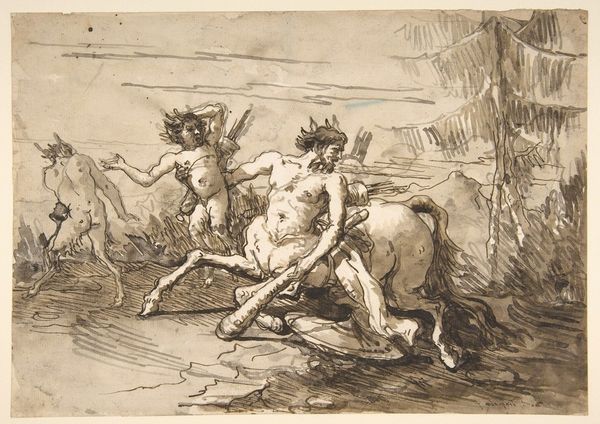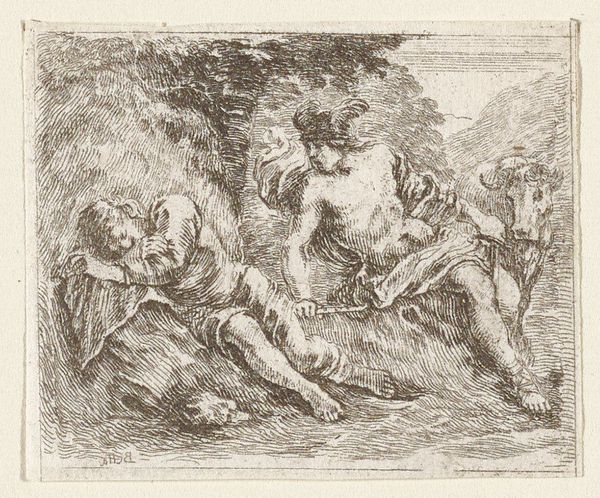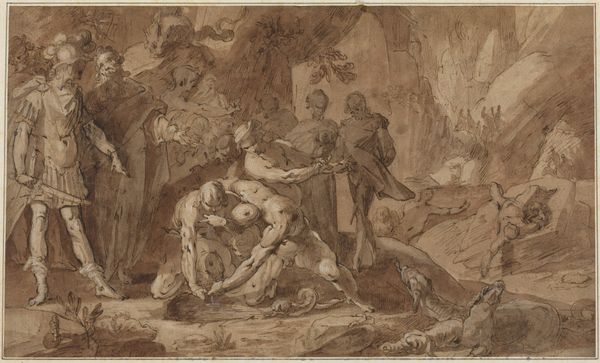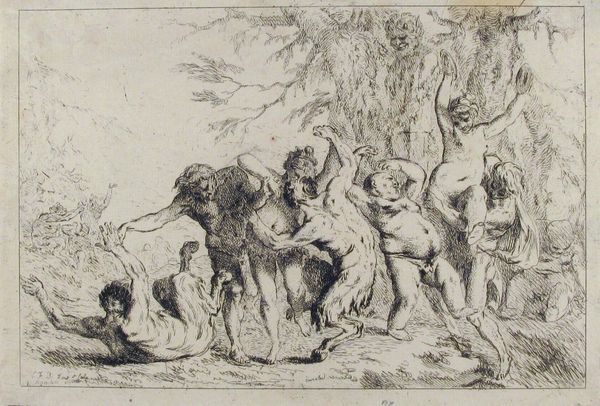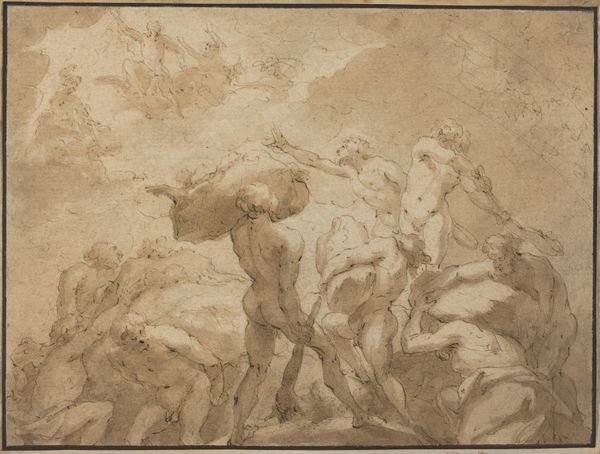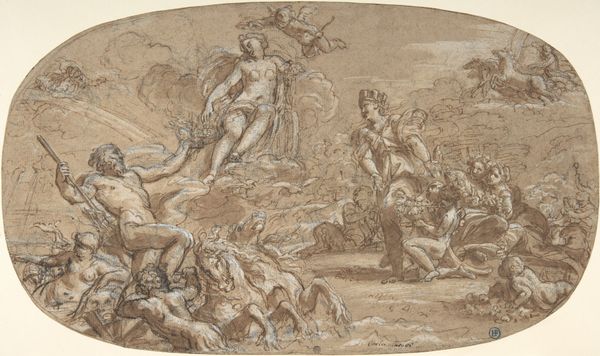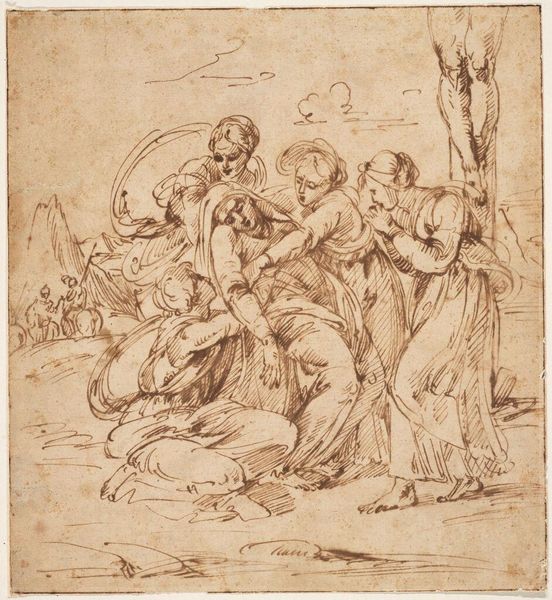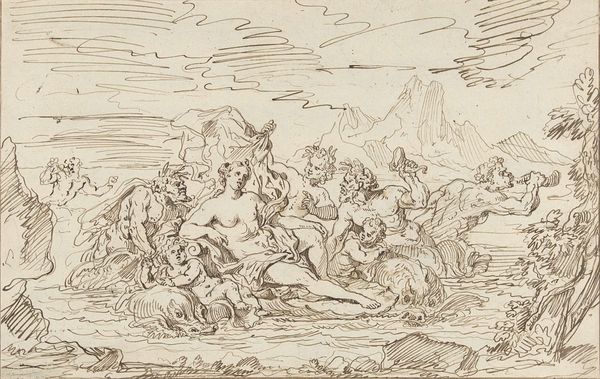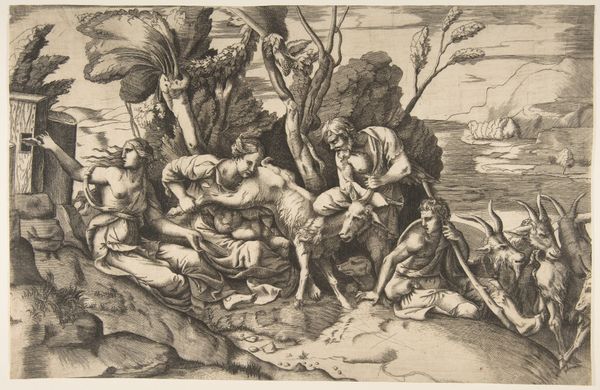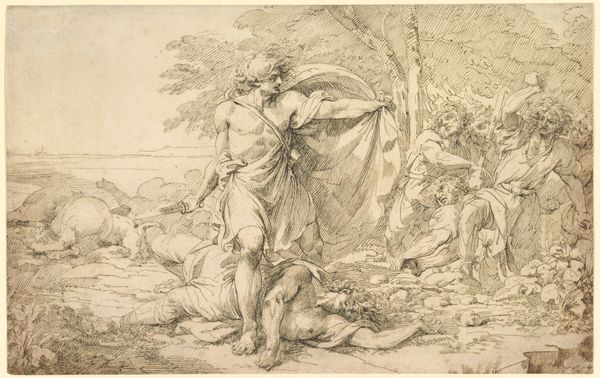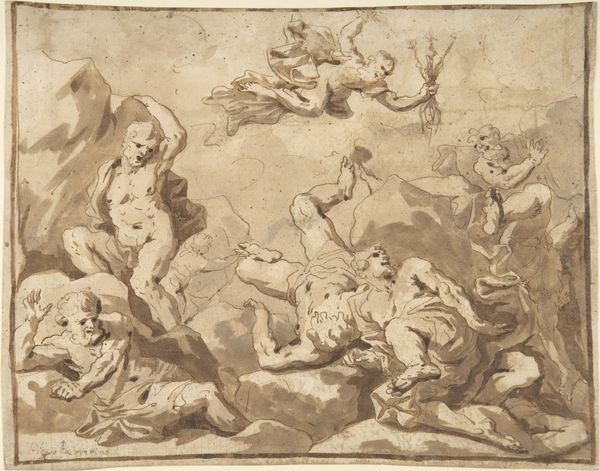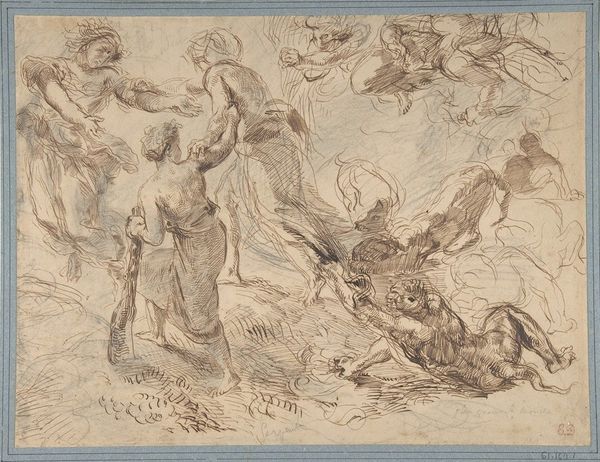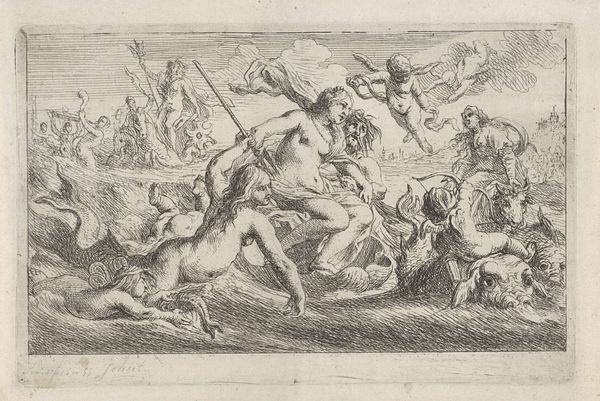
Satyrs Carrying Baskets of Provision for Their Families c. 1771 - 1791
0:00
0:00
Copyright: Public Domain: Artvee
Curator: Immediately, I see the deep tones achieved in the medium – looks like a sepia ink wash drawing. Editor: The scene feels crowded, chaotic almost. It’s intriguing, this abundance of figures and their... well, their primal energy. I see echoes of bacchanals. Curator: We're looking at "Satyrs Carrying Baskets of Provision for Their Families," a work on paper created by Giovanni Domenico Tiepolo sometime between 1771 and 1791. It showcases Tiepolo’s masterful application of ink and wash. Note how the different tonal values provide both volume and drama. Editor: The satyrs, obviously, draw heavily on classical mythology. These creatures – half-man, half-goat – have long been symbols of untamed nature, instinct, fertility, and excess. They become associated with particular rituals celebrating Dionysus and Pan. Are they meant as pure celebration here? I do wonder, given they carry provisions…are we seeing a domestic scene played out within a mythical setting? Curator: It's interesting how he reconciles this pastoral setting with what seems like, at first glance, purely decorative figures. He uses locally available materials like gall ink to quickly depict figures and narratives for upper class Venetian collections. Editor: And note how the baskets themselves – symbols of harvest, bounty, the fruits of labor – they are brought to the foreground, aren't they? This gesture, of carrying for families... That speaks to me. It complicates our initial sense of purely unrestrained hedonism, don’t you think? I perceive a gentler undercurrent beneath all that visible commotion. Curator: Certainly, this drawing allows us insight into the daily labor for sustenance – it isn't divine but rather, an intrinsic element that enables Tiepolo's allegorical fantasy to function in our material world. Editor: These satyrs, rooted in myth, begin to reflect more commonplace responsibilities; yet it is within the fantastical realm that a moral concept like obligation takes form. What better setting for grappling complex realities than within the scope of these fantastical scenarios, removed from immediate human context? Curator: I appreciate how considering its material, in that sense, shifts our thinking about its content. Editor: Precisely, and looking through this lens reveals the potency of inherited imagery, still reverberating with resonance and layered meaning.
Comments
No comments
Be the first to comment and join the conversation on the ultimate creative platform.
